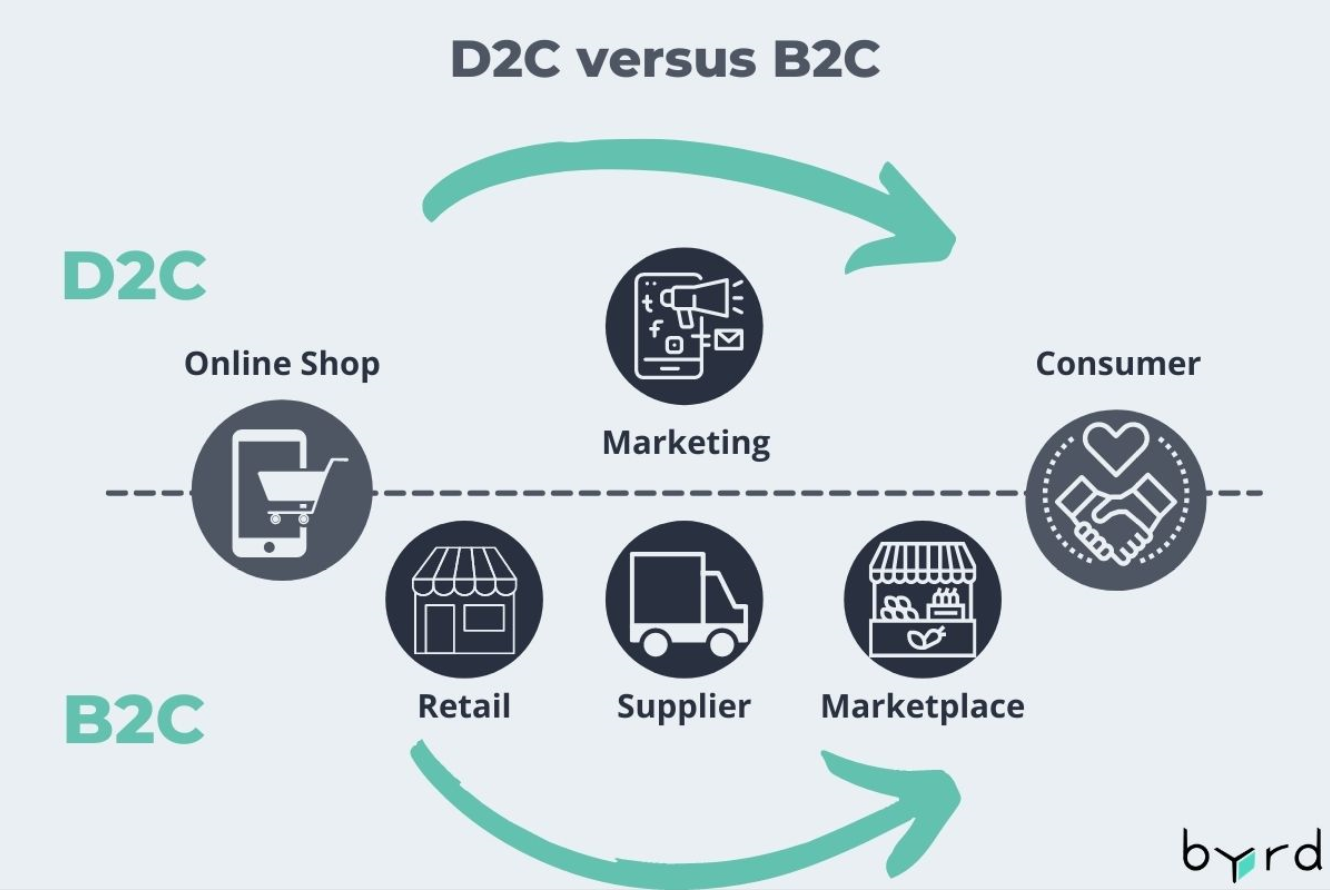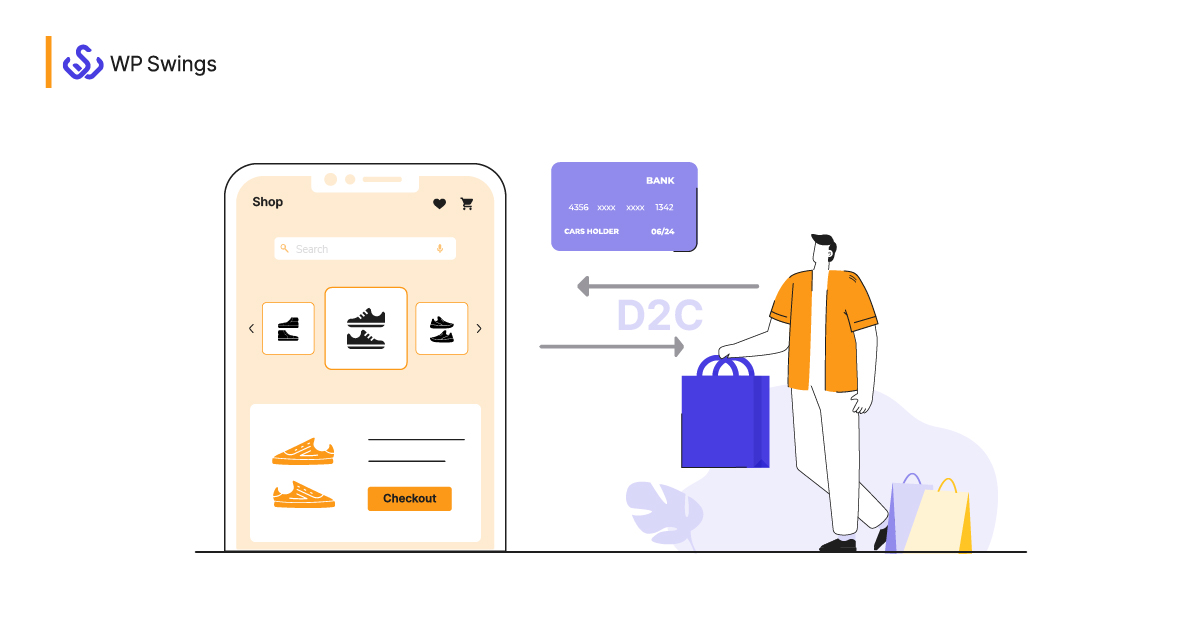Are You Losing Sales? A D2C Ecommerce Agency Could Be the Solution
Wiki Article
Discovering the Prospective of D2C Ecommerce: A Comprehensive Overview for Services
The D2C ecommerce version offers a significant change in how brands involve with customers. It enables firms to bypass standard retail channels, promoting deeper links and possibly raised profit margins. Nonetheless, this method is not without its intricacies. Comprehending the subtleties of D2C ecommerce is important for brands aiming to thrive. What techniques can they take on to navigate this developing landscape properly? The responses might redefine their service methods.Recognizing the D2C Ecommerce Version

Key Benefits of D2C Ecommerce for Brands
The D2C ecommerce model uses brand names substantial advantages, specifically relating to boosted revenue margins. By removing intermediaries, business can preserve a bigger share of sales earnings. Furthermore, this straight relationship with clients promotes enhanced brand name loyalty, motivating repeat acquisitions and lasting involvement.Increased Earnings Margins

Boosted Brand Name Commitment
Structure on the monetary benefits of D2C ecommerce, boosted brand commitment arises as an additional crucial benefit for firms engaging straight with consumers. By developing a direct link, brand names can foster much deeper connections with their consumers, acquiring insights into behaviors and choices. This direct communication permits more individualized advertising strategies, which resonate highly with customers. Furthermore, brand names have the chance to regulate their messaging and customer experience, strengthening brand values and constructing trust. When customers feel a personal link, they are much more most likely to return, advocate for the brand name, and take part in area engagement. Inevitably, enhanced brand name loyalty not only drives repeat purchases but additionally grows an enthusiastic consumer base, additional solidifying a brand name's position in the market.Challenges Dealt With by D2C Brands
D2C brand names encounter a number of considerable obstacles that can influence their success. Inventory monitoring issues can result in stock scarcities or excess, complicating procedures and customer complete satisfaction. In addition, advertising and marketing budget plan restrictions often restrict the ability to effectively get to and engage target market.Stock Monitoring Issues
Efficient inventory management provides a formidable obstacle for numerous brands running in the direct-to-consumer (D2C) area. These brand names frequently come to grips with fluctuating need, which can bring about overstock or stockouts, eventually impacting client contentment and earnings. Additionally, the lack of innovative inventory radar can result in disparities between real supply degrees and reported data, making complex order satisfaction. The varied range of items D2C brands commonly use additionally complicates inventory monitoring, as variants in designs, shades, and dimensions need more precise oversight. In addition, numerous D2C services might deal with limited warehousing capacities, resulting in inefficient use room and resources. Consequently, reliable supply management stays an important hurdle for D2C brand names going for lasting development and functional effectiveness.Advertising And Marketing Budget Constraints
Navigating marketing budget constraints is a substantial challenge for numerous direct-to-consumer (D2C) brand names. Minimal funds frequently restrict these firms' capacity to invest in comprehensive advertising and marketing approaches, causing reduced presence in a competitive market. D2C brands frequently grapple with the need to take full advantage of return on financial investment (ROI) while targeting specific target markets successfully. This difficulty is worsened by climbing costs in digital advertising and marketing and the need to allot funds across numerous channels, consisting of social media sites, internet search engine, and email advertising. Several D2C brands need to introduce economical advertising options, leveraging organic growth methods and influencer partnerships. Inevitably, efficiently maneuvering these budget constraints is essential for sustaining development and attaining lasting success in the advancing ecommerce landscape.Strategies for Developing a Successful D2C Ecommerce Service
As consumers significantly seek straight connections with brand names, establishing a successful D2C ecommerce company requires a strategic approach that focuses on consumer engagement and count on. One efficient method is to create compelling brand stories that reverberate with target market, fostering emotional connections. Utilizing social media sites systems can improve visibility and facilitate two-way interaction, permitting brands to engage straight with customers.Moreover, customized experiences with tailored marketing initiatives can significantly enhance consumer retention and loyalty. Implementing commitment programs and supplying exclusive deals can better incentivize repeat purchases.Streamlining the purchasing process is essential, guaranteeing an easy to use user interface that boosts the purchasing experience. In addition, transparent communication relating to shipping and returns constructs trust fund and encourages consumer confidence.Finally, actively looking for customer responses and replying to it shows a commitment to enhancement and customer satisfaction, crucial components in the competitive D2C landscape.Leveraging Technology for Boosted Consumer Experience
In today's competitive D2C ecommerce landscape, technology plays a crucial duty in forming customer experiences. Organizations significantly use advanced tools such as artificial intelligence, chatbots, and customized formulas to enhance interactions and streamline the buying process. her latest blog By incorporating these technologies, brands can give customized product referrals based upon private choices and purchasing actions, cultivating a more appealing experience.Moreover, responsive website styles and mobile applications assure that consumers can access services seamlessly throughout different devices. Enhanced settlement options, consisting of electronic purses and one-click check outs, further streamline transactions, making it simpler for consumers to make purchases.Data analytics also enables organizations to collect understandings into consumer actions, allowing for continuous renovation of services and offerings. Generally, leveraging modern technology not only enhances consumer complete satisfaction yet additionally grows loyalty, ultimately driving long-term success in the D2C ecommerce sector.Marketing Tips to Drive D2C Sales
Exactly great site how can brand names properly catch the focus of customers in a saturated market? To grow in the direct-to-consumer (D2C) landscape, brand names should use targeted advertising techniques. Making use of social media sites platforms, brand names can involve customers with interactive web content, influencer partnerships, and user-generated messages. Personalized email campaigns can likewise foster a sense of connection, using customized promos based on consumer behavior and preferences.Moreover, narration plays a vital duty in separating a brand name's story, making it remarkable and relatable. Brands should invest in seo (SEO) to enhance visibility, ensuring their items are conveniently visible online. Additionally, leveraging data analytics allows businesses to improve their advertising and marketing strategies and understand consumer fads better. Eventually, a multi-channel strategy that integrates imagination with data-driven understandings can considerably enhance D2C sales, permitting brand names to stand out in a crowded market.Future Trends in D2C Ecommerce
With the quick advancement of innovation and consumer choices, the future of D2C ecommerce is poised for substantial transformation. Emerging patterns show a change in the direction of hyper-personalization, where brand names leverage information analytics to customize offerings to private customer requirements. This customization boosts client experiences, fostering commitment and engagement.Moreover, sustainability is becoming an essential variable, with customers significantly preferring brands that prioritize green techniques - D2C Ecommerce Agency. Companies are expected to embrace transparent supply chains and sustainable materials to satisfy this demand.The combination of expert system and augmented reality will in addition change the shopping experience, permitting consumers to picture products in their environments before acquisition. Additionally, social business is anticipated to grow, as systems like Instagram and TikTok promote smooth buying experiences straight within social media.These patterns jointly signify a dynamic future for D2C ecommerce, highlighting customer-centric approaches and ingenious modern technologies that redefine consumer communicationsFrequently Asked Concerns
What Industries Benefit A Lot Of From D2C Ecommerce?
The click this link existing concern highlights industries that thrive through direct-to-consumer (D2C) ecommerce. Extremely, style, elegance, electronic devices, and food industries take advantage of D2C designs to enhance brand name commitment, boost consumer relationships, and maximize profit margins efficiently.How Do Shipping Costs Affect D2C Pricing Methods?
Delivering prices greatly affect D2C rates techniques. Businesses should balance these costs with affordable prices, taking into consideration consumer expectations and revenue margins. Efficient management of delivery can boost consumer contentment and drive sales in direct-to-consumer designs.
What Payment Alternatives Should D2C Organizations Offer?
D2C businesses must supply diverse payment options, consisting of credit/debit cards, digital wallets, and acquire currently, pay later services. This range improves client benefit, enhances conversion prices, and deals with different consumer choices in the online purchasing landscape.Exactly How Can D2C Brands Take Care Of Customer Returns Properly?
D2C brands can deal with customer returns efficiently by implementing easy to use return plans, using pre paid shipping labels, and making certain prompt reimbursements (D2C Ecommerce Agency). Clear communication and structured processes boost consumer contentment and urge repeat businessWhat Legal Considerations Exist for D2C Ecommerce Workflow?
Lawful factors to consider for D2C ecommerce operations include conformity with consumer protection legislations, data privacy laws, copyright legal rights, and tax demands. Brand names must navigate these complexities to stay clear of legal pitfalls and assure smooth procedures. By removing intermediaries, D2C brands can offer competitive rates and promote an extra intimate partnership with their customers.The D2C version is identified by its reliance on digital platforms, making it possible for brands to make use of social media, on the internet markets, and their very own web sites to engage with consumers directly. D2C ecommerce assists in the collection of beneficial customer information, enabling brands to customize their offerings and advertising techniques successfully, eventually driving sales and enhancing margins. Additionally, brands have the chance to regulate their messaging and customer experience, strengthening brand values and constructing trust fund. As customers significantly seek straight links with brands, establishing a successful D2C ecommerce business calls for a critical technique that prioritizes consumer interaction and depend on. D2C brand names can take care of client returns efficiently by carrying out user-friendly return plans, providing prepaid delivery tags, and guaranteeing prompt reimbursements.Report this wiki page